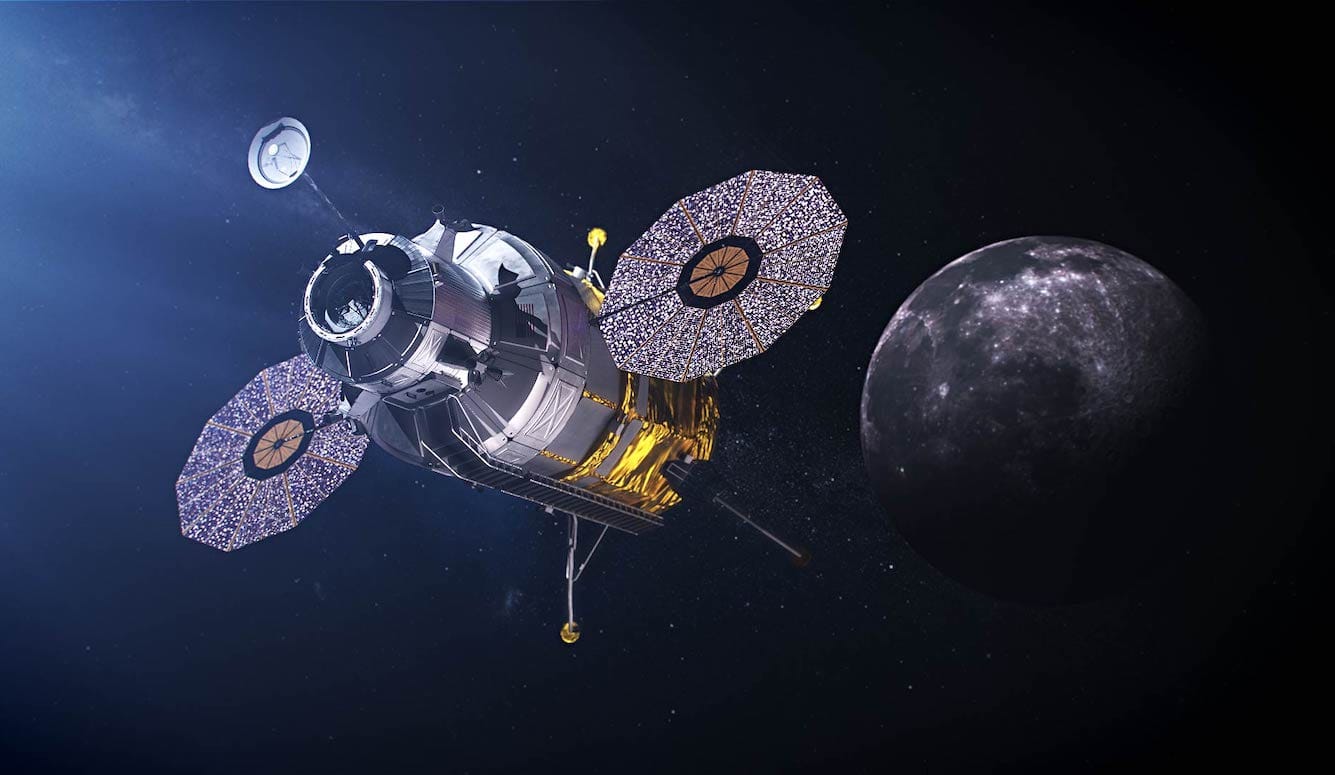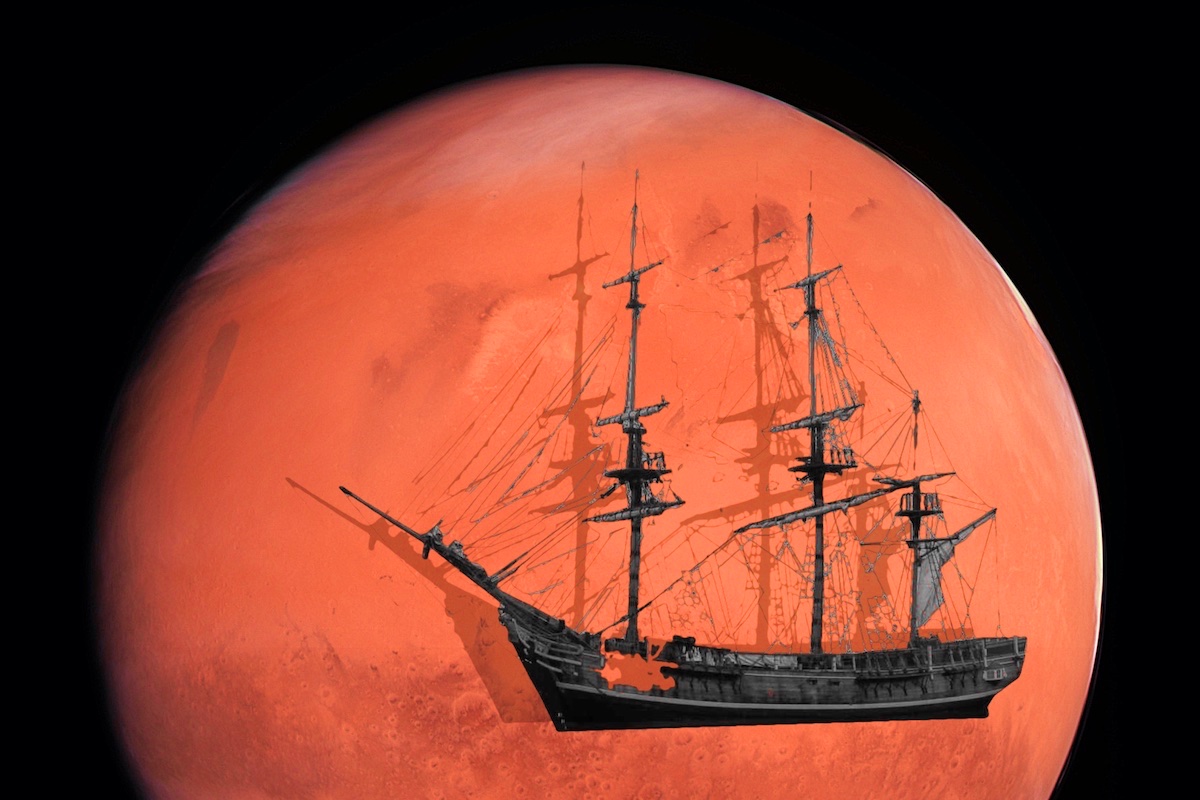Mars
In Space, Let Meritocracy Reign Supreme
Those who travel to Mars will not need to debate free markets, bureaucracy, or state control of the means of production. They will not care about the ethnicity or gender identity of their peers. They will be too busy figuring out how to survive.

On October 21, U.S. National Aeronautics and Space Administration (NASA) Administrator Jim Bridenstine told the House Committee on Science, Space and Technology that he foresees NASA will land astronauts on the moon by 2035. “We need to learn how to live and work in another world,” he told lawmakers. “The moon is the best place to prove those capabilities and technologies.”
The article that follows comprises the sixth instalment in “Our Martian Moment,” a multi-part Quillette series in which our authors discuss what kind of society humans should build on Mars if and when we succeed in colonizing the red planet.
For science-fiction writers, Mars always has been a blank slate on which to write our hopes and project our fears. Ray Bradbury imagined a Mars settled by farmers who cover the red planet with idyllic midwestern American towns. Robert Heinlein, swept up in 1960s counterculture, imagined a Mars where gnostic aliens teach free love, spiritual wisdom and psychic powers to a hippy messiah. More recently, Kim Stanley Robinson’s Red Mars trilogy—science fiction’s War and Peace—imagines a Mars strangely like Berkeley, with a gig economy that allows citizens to spend an inordinate amount of time hiking and pursuing other outdoor recreations. Entrepreneurs, too, use Mars as their canvas—including Elon Musk, who imagines a Martian society that features a system of direct democracy stripped of terrestrial bureaucracy.
In a distant, idealized future, life on Mars will be normalized, with the dangers inherent in interplanetary colonization having been mitigated by redundant infrastructure, a steady supply of food, water and air, and a growing wealth surplus. At such a time, we can suppose, some utopian project would be possible and even likely. But until such time, Martian lives will depend on delicate and unpredictable technical processes and life-support systems. And so the organization of Martian society will have to be based around a disciplined and rigorously meritocratic technocracy. The political overlay, whose decision-making protocols would be invoked only in regard to non-critical issues, would have to be an extension of our terrestrial government: To experiment with new forms of government during the perilous start-up period would be dangerous.

Here, the vision of Star Trek is closer to the truth than the writings of Bradbury or Robinson. Star Trek portrays an overarching organization—the United Federation of Planets—which delegates enormous power to Starfleet, a uniformed space force characterized by military discipline and a strong tradition of meritocracy. Civilian administrators assert their primacy in the Star Trek universe, but typically only in contexts where there are no acute military, logistical or environmental risks.
Mars is a harsh world. The atmosphere is so thin that it might as well be a complete vacuum, and temperatures can get low enough to freeze carbon dioxide. There is negligible protection from radiation. Gravitational acceleration on the surface of Mars is only about 40% of Earth’s gravity, which may present long-term dangers to any species that evolved on our planet. It is not at all obvious that Martian soil could ever grow Earth crops. For the first settlers, death by asphyxiation, hypothermia, dehydration and starvation will always be a clear and present danger. And so every aspect of operations will have to be conducted in a way that minimizes risk.
Our best model for a Martian colonization program is the Apollo program, which landed the first humans on the moon—though even in this case, technical compromises were made in order to keep the program funded. For example, manufacturing and development were spread around the United States during the 1960s as a means to attract the support of federal legislators who might otherwise cut funding. Each stage of the Saturn V rocket had a different manufacturer, complicating integration and assembly. And the tight timeline that John F. Kennedy had demanded entailed unnecessary risks. It required, for instance, an “all up” testing strategy for the Saturn V (as opposed to testing each stage individually and repeatedly), a dangerous gamble that fortunately paid off.
In other respects, however, the program was run on a technically rigorous basis. NASA required that astronauts be well-educated (preferably with a degree in engineering) and have extensive flying experience (preferably as a test pilot). Candidates were expected to have repeatedly demonstrated an extraordinary ability to remain calm under pressure. They also had to be in perfect health. (Deke Slayton, one of the best performing astronauts, was grounded for years because of an irregular heart rhythm.)

Consider the pedigree of the most famous of the Apollo astronauts, Neil Armstrong. As a child, he was obsessed with science, engineering and flight. He worked odd jobs to raise enough money to pay for flying lessons in Wapakoneta, Ohio, and hitchhiked to a nearby grass airstrip to take lessons. He earned his junior pilot license at 16, before he could drive. He served as a pilot in the Korean war, and during one mission over North Korean airspace, lost part of a wing. Armstrong somehow managed to climb from treetop level to 14,000 feet, and fly his crippled F9F Panther back to South Korean airspace before ejecting.
During the Gemini 8 mission, a short circuit caused a yaw thruster to misfire, sending Armstrong’s ship into a roll and then a tumble that reached a frequency of one rotation per second. Armstrong’s voice was eerily calm as he explained the problem and wrested back control, all the while—as he euphemistically put it later—“physiological limits were being approached.”
Readers can watch on YouTube as Armstrong aborts a 1969 flight on the LLTV (Lunar Landing Training Vehicle), an ungainly machine meant to approximate the experience of piloting the Lunar Landing Module, little more than a jet engine that the pilot balanced atop. On one training flight, Armstrong’s LLTV controls failed and the vehicle began to roll over. He ejected at the last possible moment. As the LLTV exploded and burned, Armstrong brushed himself off, answered a few questions, and then drove to the office for a full day’s work. The other Apollo astronauts had similarly impressive back stories.
Yet our era has a complicated relationship with the idea of meritocracy, which some now present as an illusion that operates as a mask for privilege. One prominent academic tours the United States advising colleges on their human-resources policies, instructing academics that the words “I believe the most qualified person should get the job” comprise a form of “microagression.” Other university professors claim that even the articulation of “objective” baselines can be seen as part and parcel of “white supremacy culture.”
This shift in attitude was illustrated by coverage of the fiftieth anniversary of the Apollo landing in the New York Times. Much of the coverage was dedicated to attacking Apollo’s lack of diversity. One widely criticized article, for instance, was titled “How the Soviets Won the Space Race for Equality: The U.S.S.R. sent women and people of color to space years before the U.S.”
The Apollo astronauts were chosen largely from the then-available pool of college-educated test pilots. There were no women and few African Americans contained in that pool. I wish that black test pilot Ed Dwight (the subject of a lengthy New York Times profile) had been on Apollo 11. And I wish there’d been a female astronaut with him. But given the fierce competition for these roles, and the lopsided demographics of the pool from which NASA was recruiting, it wasn’t surprising that the selected individuals were all white men.

The fault lay less with NASA than with the racism and sexism that caused the talent pipeline to be so constrained. And once NASA and related organizations managed to diversify the talent entering that training pipeline, they went on to have a laudable record of diversity. As the Times itself quotes Ed Dwight, “I don’t know any person with determination and will that can’t go to space.”
If the Apollo program were organized today, its astronauts would be diverse—not because NASA would artificially skew the selection process to please The New York Times, but because the application of meritocratic principles would yield that result. This is an important distinction: Our modern fixation on diversity is focused on optics, while the integrity of any highly demanding, high-risk technical mission (of which interplanetary travel is perhaps the ultimate example) demands a focus on meritocracy, with diversity emerging as a beneficial byproduct.
It is often said that the world of Star Trek, like other idealized science-fiction worlds, is based on the conceit of a post-scarcity economy. But we will never be able to take even baby steps to this vision if we embrace a post-competence approach to engineering and project management. A post-competence mindset may be acceptable in rarefied cultural, academic and aesthetic milieus in which success and failure are not applicable concepts. But it would be disastrous in a world where a single mistake can result in the deaths of whole communities.
Those who travel to Mars will not need to debate free markets, bureaucracy, or state control of the means of production. They will not care about the ethnicity or gender identity of their peers. They will be too busy figuring out how to survive. Someday, they may choose libertarianism or socialism, or they may wade into identity politics, just as we’ve done here on earth. But first, they will need the skills to make a lifeless planet bloom.






